Posted by Founder, Bicycling Monterey
“A Right to the Road”: Understanding and addressing the safety of people who bike
As State Farm spokesperson Vicki Harper told Washington Post writer Ashley Halsey III—speaking about a State Farm-funded report from the Governors Highway Safety Association, released 8/24/17—“When we bike, we have as much right to the road as when we drive.”
For an intro to the report, see Halsey’s story—http://www.washingtonpost.com/local/trafficandcommuting/bike-riding-isnt-childs-play-anymore-and-cycling-crash-deaths-are-soaring/2017/08/23/abbcb22e-8773-11e7-a94f-3139abce39f5_story.html.
Then check out the 75-page report, “A Right to the Road: Understanding & Addressing Bicyclist Safety.” A free download is provided on the GHSA website, where related infographics are provided as well: http://www.ghsa.org/resources/bicyclist-safety2017
For some highlights from the report, and related Monterey County info, read on.
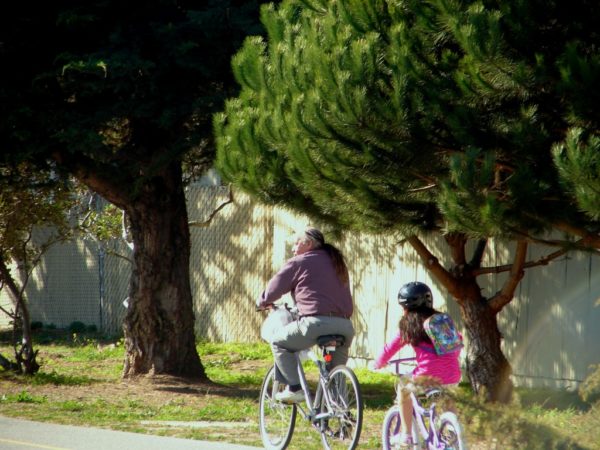
Among the wide range of info in the report, it points out that in 1969, 48% of children biked to school as compared to 2.2% now.
Among things appreciated is the report’s making clear (e.g., see pg 48): “Providing infrastructure that separates riders from motorists is the most effective.” There they refer to Cycle Tracks (AKA Protected Bike Lanes / Class 4 Separated Bikeways), which California Bicycle Coalition strongly advocates for as well; learn more about Class 4.
In the absence of such infrastructure, the GHSA report recommends (among other measures) bike boxes. A bicycle box “gives bicyclists a head-start when the light turns green as well as improves their visibility to motorists who can see in which direction cyclists are proceeding.”
Learn more about bike boxes: http://nacto.org/publication/urban-bikeway-design-guide/intersection-treatments/bike-boxes/
As the California Bicycle Coalition July 13, 2017 webinar http://www.calbike.org/protected_bike_lanes reported, “If you do a project while resurfacing, it can be about half the cost.”
Feed alert: @BikeMonterey is live-tweeting our Protected Lane webinar. We'll post a recording and resources asap. https://t.co/zFIwIbh2Jw
— California Bicycle Coalition (@CalBike) July 13, 2017
Updates to this post
The post above, first published 8/24/17, has 7/3/19 and 5/19/18 updates below about bike box request for CA SR 68, a request made about a year prior to a Caltrans repaving project. For related proposed legislation, click here and refer to Complete Streets for Active Living (SB 127). Also note a September 2019 call to action about #SB127—click here.
Update, 7/3/19
Caltrans response today: “Typically we do not use bike boxes on high speed facilities unless we can substantiate their need via a collision history involving bicyclists; this is due to possible secondary safety impacts associated with their introduction. Unfortunately the requested locations do not demonstrate a need at this time. We will allow for local municipalities to install the requested feature under an encroachment permit if they can substantiate a need, as part of a bicycle circulation plan. Thank you.”
Update, 5/19/18
On July 25, 2017, Bicycling Monterey filed a request with the California Department of Transportation that bike boxes be added on CA SR 68—e.g., at Olmsted Road and at Highway 218 / Canyon del Rey in spring 2018. (Another suggested location for a bike box is westbound Hwy 68 at Josselyn Canyon Road, for people on bikes making a left turn onto Josselyn.) Why spring 2018? Although the repaving began later than originally scheduled, that’s when Caltrans was scheduled to repave 7 miles (as reported in Monterey County Weekly) of that Monterey-Salinas corridor. Sounded to us like a good time to add the boxes in a cost-effective way.
On 4/19/18, Caltrans finally responded to our 7/25/17 request. Their reply, in its entirety, stated: “Our Traffic Operations department has reviewed your request and determined that this project will be strictly a replace in kind process. There will be no changes to striping patterns, and no bicycle boxes will be incorporated into this project. Improvements as mentioned will need to started on a different type of process which will then evaluate suggestions and features on a corridor wide approach.” That was confirmed on 5/15/18 by Kelly McClendon, who added: “Caltrans isn’t opposed to the project conceptually, we’re just unable to incorporate it into the SB 1 project due to specific characteristics of that project.”
Meanwhile, “SB1 funds at work” signs went up on Highway 68 in May 2018. People who bike will not find bike boxes added when those seven miles of Highway 68 are repaved in 2018.
Highway 68 is very heavy with traffic. Visit TAMC’s website to learn about solutions they’ve proposed: http://www.tamcmonterey.org/programs/highway-projects/sr-68-scenic-highway-plan/
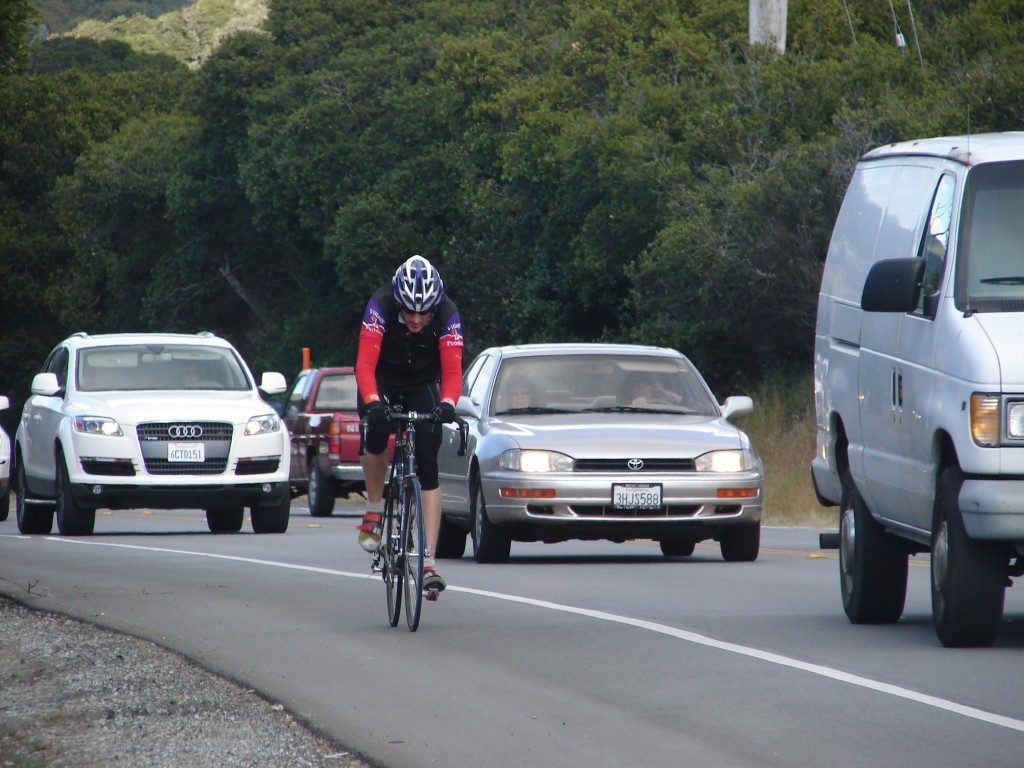
Why would people even want to bike busy Highway 68? For many, it’s because they live off 68, and commuting by bike requires using that road for a portion of their journey. For others, they find the stress of traffic congestion is worth it to enjoy the beauty alongside this officially designated California scenic highway.
At such locations as Highway 68, bike boxes are a measure that could help—as the Governors Highway Safety Association report pointed out (page 48): “When physical separation is not possible, reducing the distance or time that bicyclists are exposed to risk is essential.”
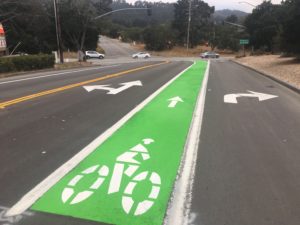
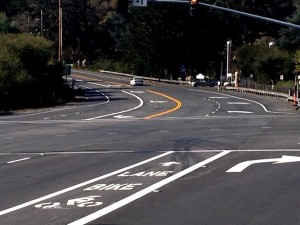
As Bicycling Monterey emphasizes, making bicycling safer isn’t just about having riding skills and observing bike laws, it’s about advocating for better infrastructure too!
One way to advocate is to attend your city or county’s transportation planning meetings. Among these in Monterey County are the Transportation Agency for Monterey County’s Bicycle and Pedestrian Facilities Advisory Committee meetings.
Another way is to get on email lists to be notified of Notice of Preparation and Scoping Meetings, e.g., like this one in Santa Cruz County. For such notices for Monterey County or where you live, start by contacting your county’s transportation agency.
For more ideas, see “Bicycling Advocacy: What you can do,” or just phone me.
There’s lots more on the Bicycling Monterey website about topics addressed in the report. Feel free to phone me if you can’t readily find what you’re looking for.
The panel of experts for the Governors Highway Safety Association report included, among others, Julia Griswold, PhD of SafeTREC, University of California-Berkeley; and Ken McLeod, Policy Director for the League of American Bicyclists.
This post was first published 24 August 2017 with a 19 May 2018 update about bicycle box requests for CA SR 68.
This post was published on 19 May 2018. One or more changes last made to this post on 26 January 2020.

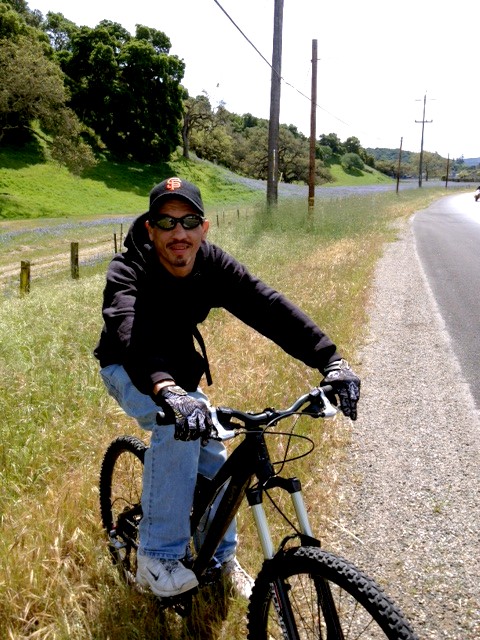

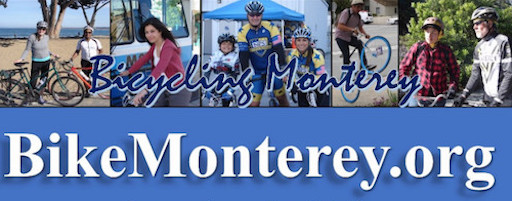
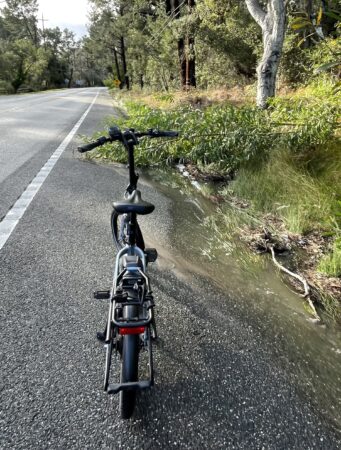

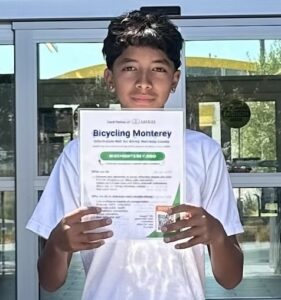


Thank you for your comment, Geoff. Besides your being a local resident who lives off Hwy 68, readers may be interested in knowing that your perspective also comes from being a certified League of American Bicyclists cycling instructor—someone quite knowledgeable about riding skills and safety issues. Thanks again for commenting.
One would think it would be the perfect opportunity to incorporate bike boxes into the repaving project. Living off of hwy 68 myself, I certainly can attest to the need for greater visibility and additional safety features to reduce the risk of being struck by a vehicle. There are many collisions on that stretch of road. I would suggest most are caused by distracted or aggressive drivers. It’s not a matter of if, rather when there will be a serious vehicle/bike related incident.